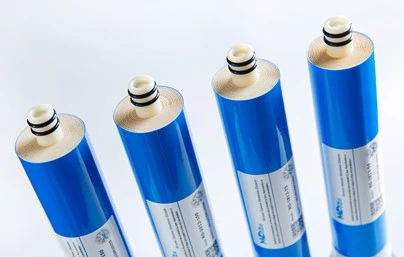What are 3 types of RO?
Reverse osmosis (RO) technology has revolutionized water purification, providing a reliable method for obtaining clean drinking water from various sources. As an individual deeply immersed in the study and application of water treatment technologies, I find the principles behind RO fascinating and essential to understand for anyone seeking to grasp its efficacy.

Working Principle:
Reverse osmosis operates on the principle of selectively allowing solvent molecules to pass through a semipermeable membrane while rejecting contaminants. In simpler terms, it separates clean water from impurities by using pressure to force water through a membrane that blocks larger molecules and ions. This process effectively removes dissolved salts, bacteria, viruses, and other harmful substances, leaving behind purified water suitable for consumption.
The RO membrane, a critical component, consists of tiny pores that allow water molecules to pass through while trapping larger particles. This selective permeability ensures that only clean water can permeate the membrane, while impurities are left behind and flushed away.
Efficiency of the RO Membrane:
The efficiency of the RO membrane is a key factor in determining the overall effectiveness of the reverse osmosis process. It is typically measured by the percentage of contaminants removed from the feed water, known as the rejection rate.
RO membranes boast impressive removal rates for a wide range of contaminants, including dissolved salts, heavy metals, and organic compounds. High-quality membranes can achieve rejection rates exceeding 99%, ensuring that the purified water meets stringent quality standards.
In any case, it's basic to note that the productivity of the RO layer can be impacted by different variables, such as bolster water quality, working conditions, and layer astuteness.Regular maintenance and monitoring are necessary to ensure optimal performance and longevity of the membrane.
Types of RO Membranes:
Presently that we've secured the working rule and productivity of RO layers, let's dive into the three essential sorts of RO films commonly utilized in water treatment applications:
1. Cellulose Acetate (CA) Membranes:
Cellulose acetate membranes were among the first to be used in commercial RO systems. These membranes are relatively inexpensive and possess good resistance to organic fouling, making them suitable for treating feed waters with low to moderate fouling potential. However, CA membranes are prone to degradation when exposed to chlorine and are less effective at rejecting certain contaminants compared to newer membrane materials.
2. Thin Film Composite (TFC) Membranes:
Thin film composite membranes represent a significant advancement in RO membrane technology. These membranes feature a thin polyamide layer over a porous support material, offering high rejection rates and excellent resistance to fouling and chemical degradation. TFC membranes are widely used in residential, commercial, and industrial RO systems due to their superior performance and durability.
3. Polyamide Thin Film (PA) Membranes:
Polyamide thin film membranes are similar to TFC membranes but feature a denser polyamide layer, providing enhanced rejection capabilities for dissolved solids and contaminants. PA membranes exhibit superior salt rejection and permeate flux compared to other membrane types, making them ideal for applications requiring high purity water, such as pharmaceutical production and desalination.
In conclusion, reverse osmosis technology relies on the intricate interplay of semipermeable membranes and applied pressure to deliver clean, purified water. Understanding the working principles and different types of RO membranes is crucial for selecting the most suitable solution for specific water treatment needs.
References:
American Water Works Association - Reverse Osmosis Membrane Technology
U.S. Environmental Protection Agency - Reverse Osmosis
Water Quality Association - Reverse Osmosis Systems
